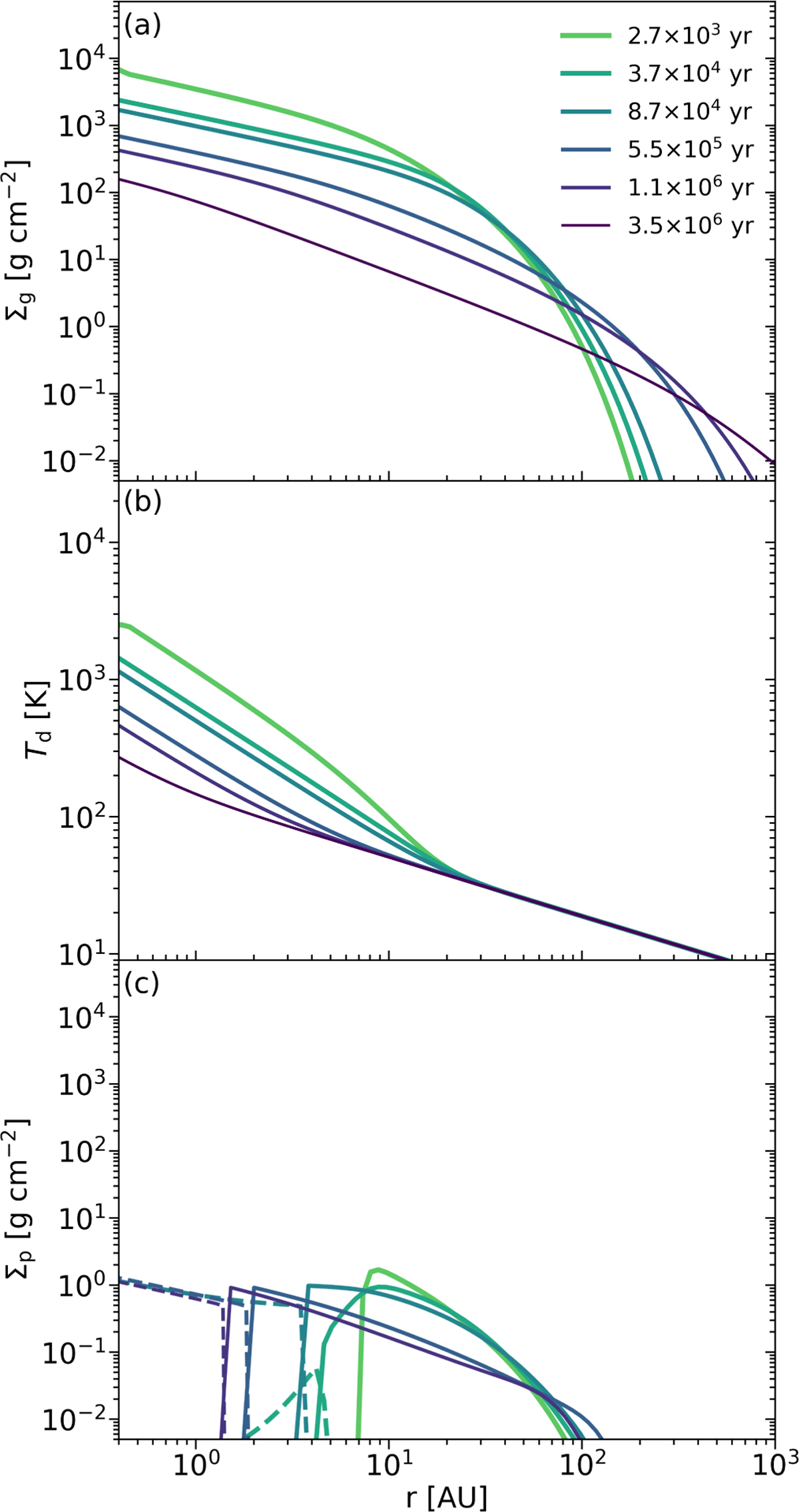Fig. 1

Download original image
Gas surface density, gas temperature, and pebble surface density evolution for the Nominal disk model. (a) The mass in the inner disk decreases in time due to accretion onto the central star, whereas the mass in the outer gas disk expands into wider orbits to conserve angular momentum. (b) At early times the midplane temperature inside 30 AU is dominated by viscous heating and the outer part of the disk is heated by irradiation from the central star. (c) Solid lines show the distribution of the unprocessed pebbles that are located behind the water ice line (see Sec. 2.4). After ~1 Myr the inner surface density increases since a fraction of these solids moves inward due to radial drift. These pebbles subsequently sublimate at the water evaporation evaporation front now located near approximately 1 AU. The surface density of this vapor component is shown with the dashed lines.
Current usage metrics show cumulative count of Article Views (full-text article views including HTML views, PDF and ePub downloads, according to the available data) and Abstracts Views on Vision4Press platform.
Data correspond to usage on the plateform after 2015. The current usage metrics is available 48-96 hours after online publication and is updated daily on week days.
Initial download of the metrics may take a while.


